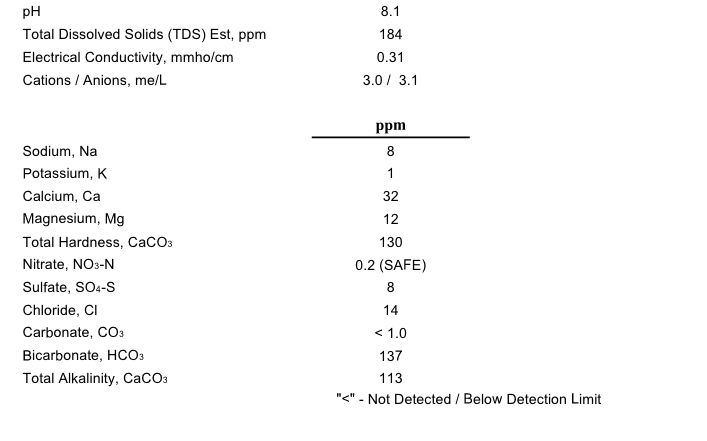

Many of us Chicagoland brewers use local tap water to brew beer and rightfully so - Chicago has some of the best brewing water that is used by many local breweries, including Goose Island and friends. So if you're trying to get your homebrewing water profile nailed down and you live in Chicagoland area, you've come to the right place.
I've emailed my local water department and got some good feedback about my local water supply, but have also got my hands on a great resource for Chicago water statistics for the last few years.
The water profiles from chicago.gov website are the same as what the Schaumburg Water Department sent me, since most of Chicago area sources its water from the Jardine Water Purification Plant. The word I got from them is these numbers are measured consistently throughout the year and they are certified by Chicago chemists. They take samples on a bi-weekly and quarterly basis, then post the averages for the year.
| Ca | Mg | Na | Cl | SO4 | pH | |
| ppm | 35.8 | 12.7 | 10 | 15.5 | 26.6 | 7.9 |
Brief summary: this is right around the numbers for all of Chicagoland.
The numbers for Sulfate and Chloride aren't available for 2019, so I sourced the available data from 2018. This is the source water chemistry profile I've been using along with Bru'n Water and Brewfather that has worked out really well.
Full Water ReportTake a look at column 3 for South Water Purification plant - this should be a good start. The numbers there are pretty similar as North Chicago and Suburbs, so you are free to use the table from above.
You can safely use Central Water profile seen under Jardine Water Plant column 6 for this profile (links above). Nonetheless, I thought it was terrific that a poster from HomebrewTalk.com sent in a Chicago water sample to Ward Labs. This is what they received in return. Spoiler alert - this pretty closely resembles the profile I retrieved from the Municipality and mentioned above. Source - Homebrew Talk

One thing to mention is that the City's plant uses average numbers for their annual report, so things like pH fluctuate throughout the year. This is likely what's responsible for the differences in data between City of Chicago reports and the report from Ward Labs. I would be curious if there are certain trends for winter and summer that brewers can take into the account. If you know anything about those - don't hesitate to reach out!
Since I initially reached out to the Schaumburg water deparment, I got some insight into how much Chlorine is in water coming from this plant. Here's link where you can find Schaumburg water reports.
It's good that Chlorine levels are relatively safe in the local tap water, but it's always a safe bet to add a Campden tablet to your brewing water right before you start.
Chlorine:
Amount Detected - 0.7 ppm
Range - 0.5–1 ppm
If you haven't quite gotten your local water chemistry profile where you want it, here are a couple of water profiles that have worked for me. Something not mentioned on here is that I add you should always use a Campden tablet for each 5 gallon batch, and lactic acid or acidiulated malt to keep your pH around 5.1 - 5.5 range.
First, of course, the NEIPA profile that has an amazing mouthfeel. The trick to not get the calcium too far past 150 is to use Epsom Salt instead of Gypsum.
| Ca | Mg | Na | Cl | SO4 | pH | |
| ppm | 150 | 30 | 9 | 215 | 95 | 3.3 |
| Ca | Mg | Na | Cl | SO4 | pH | |
| ppm | 64 | 12 | 9 | 54 | 38 | 3.3 |
| Ca | Mg | Na | Cl | SO4 | pH | |
| ppm | 111 | 24 | 10 | 120 | 220 | 3.25 |
If you have any advice on improving this article for other homebrewers, please feel free to reach me by my email below.
Happy Brewing!